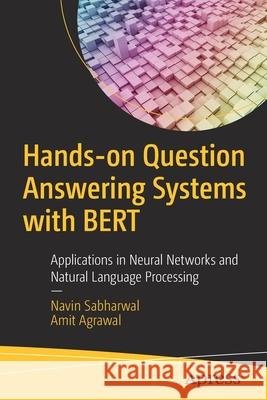Hands-On Question Answering Systems with Bert: Applications in Neural Networks and Natural Language Processing » książka
topmenu
Hands-On Question Answering Systems with Bert: Applications in Neural Networks and Natural Language Processing
ISBN-13: 9781484266632 / Angielski / Miękka / 2021 / 184 str.
Hands-On Question Answering Systems with Bert: Applications in Neural Networks and Natural Language Processing
ISBN-13: 9781484266632 / Angielski / Miękka / 2021 / 184 str.
cena 173,06 zł
(netto: 164,82 VAT: 5%)
Najniższa cena z 30 dni: 172,26 zł
(netto: 164,82 VAT: 5%)
Najniższa cena z 30 dni: 172,26 zł
Termin realizacji zamówienia:
ok. 20 dni roboczych.
ok. 20 dni roboczych.
Darmowa dostawa!
Kategorie:
Kategorie BISAC:
Wydawca:
Apress
Język:
Angielski
ISBN-13:
9781484266632
Rok wydania:
2021
Ilość stron:
184
Waga:
0.29 kg
Wymiary:
23.39 x 15.6 x 1.09
Oprawa:
Miękka
Wolumenów:
01
Dodatkowe informacje:
Wydanie ilustrowane











